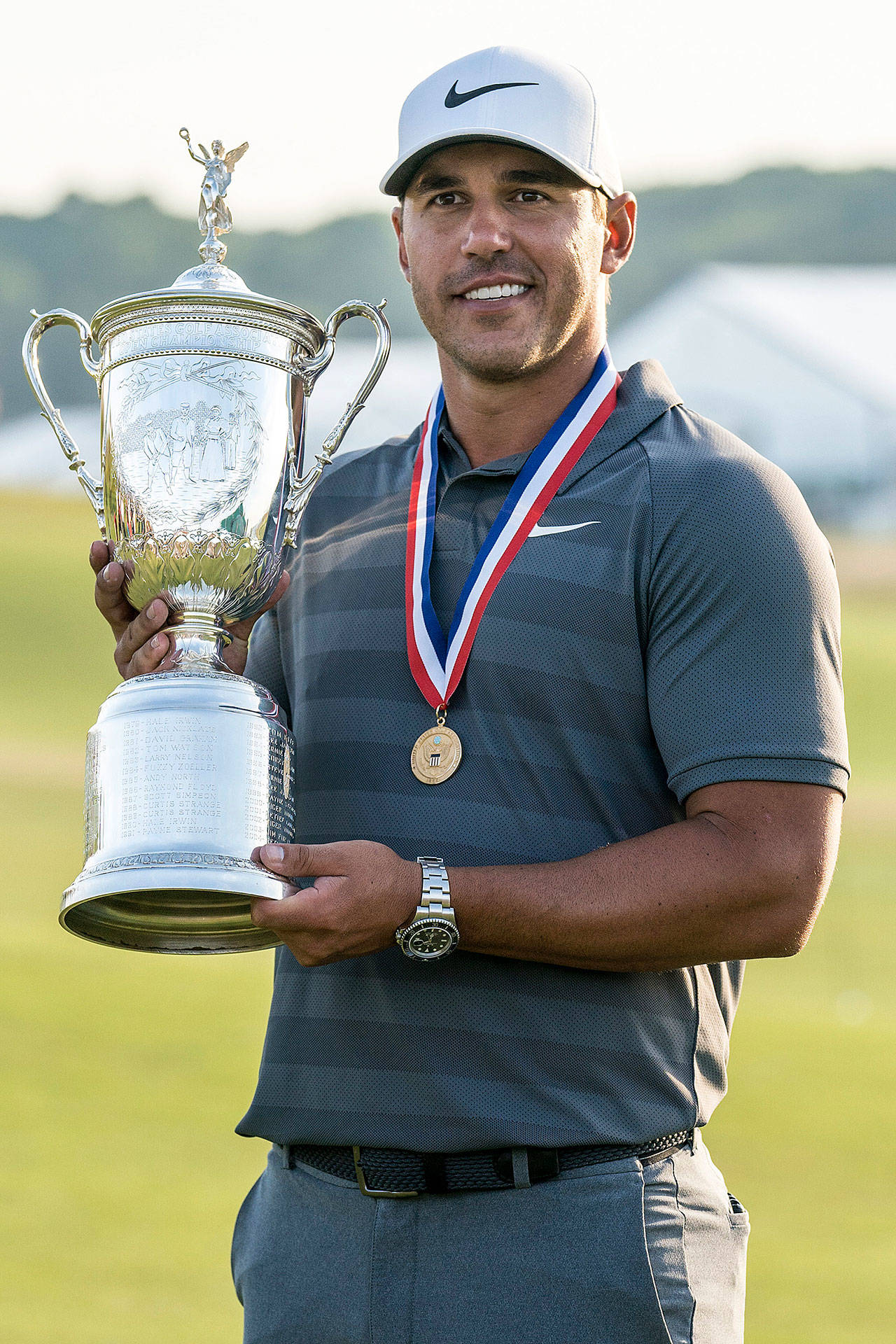By Joe Juliano
The Philadelphia Inquirer
SOUTHAMPTON, N.Y. — Brooks Koepka did nothing but sit around for about three months after partially tearing a tendon in his left wrist, a dangerous injury for a golfer where the repeated impact of taking divots could cause a chronic injury that never quite fully heals.
Yes, it drove him crazy not to play, especially not being able to compete. But once it was time to come back, he didn’t flinch. He returned to practice, found his form relatively quickly, and set out to win again, maybe even a second straight U.S. Open.
The idle time certainly didn’t affect Koepka’s confidence and shot-making ability, both of which were on full display Sunday at Shinnecock Hills Golf Club where he sank a number of clutch putts, won the U.S. Open, and became the seventh player in championship history to go back-to-back.
With Curtis Strange, the last player to win consecutive Opens in 1988 and 1989, following him as the Fox Sports reporter for his group, Koepka stayed steady amid the back-nine pressure and closed with a 2-under-par 68 for a final score of 1-over 281.
Playing with Dustin Johnson, who held at least a share of the lead at the end of the first three days, Koepka finished one stroke ahead of Tommy Fleetwood. Fleetwood fired a record-tying 63 and posted a 282 total more than 2 { hours before Koepka sank his last putt at No. 18.
Johnson, the world’s No. 1 player who took 73 putts in his last two rounds, took third at 283 after a 70.
Koepka, 28, showed not a hint of trepidation with his wrist whenever he had to hit the ball out of the deep fescue rough. He doesn’t know how he hurt it in the first place, but the injury happened sometime last November. He went nearly three months without touching a club.
“It was very frustrating, sitting on the couch, not doing anything,” he said. “I couldn’t pick anything up with my left hand. I was in a soft cast all the way up to my elbow. It wasn’t fun.
“I didn’t miss it until I knew I wasn’t going to be at Augusta (for the Masters). I missed the preparation. I missed the competitiveness. That’s really what it is. I’ve got to be competing at something. It doesn’t matter what it is.”
But when he started hitting balls again, he said, “everything came out exactly the way it should have. It felt like I didn’t miss three months.”
In just his eighth start of the season, Koepka showed he’d be a factor at Shinnecock with a second-round 66. A 72 on Saturday amid a steady wind and dicey greens found him in a four-way tie for the lead entering Sunday.
Three front-nine birdies gave him a 1-stroke lead at the turn, and a birdie at 10 put him up by 2. Then on the uphill par-3 11th, he flew his tee shot over the green, chipped out of deep rough and watched his ball roll into a bunker, blasted out and sank a 15-foot putt for bogey.
He one-putted two other times for par — 6 feet at No. 12 and 8 feet at No. 14.
“I felt like I made those clutch 8-to-10-footers that you need to keep the momentum going,” Koepka said. “I felt like we didn’t drive it that great, but you can make up so much with a hot putter, and I feel like that’s kind of what I was doing.”
A birdie at No. 16 gave him a 2-shot advantage and an extra cushion down the stretch. He needed that at the 18th after going left of the green with his approach, but a bogey was all that was required for him to take home the championship trophy again.
Koepka proved he could win the U.S. Open on two different style courses. He tied the record of 16-under last year at wide-open Erin Hills, and had enough to repeat at treacherous Shinnecock.
“It hasn’t sunk in yet,” he said. “I knew it was going to be that much more difficult. It’s much more gratifying the second time. I can really appreciate how hard it is to win a major, and to win back-to-back is special, and my second major, it’s cool.”


